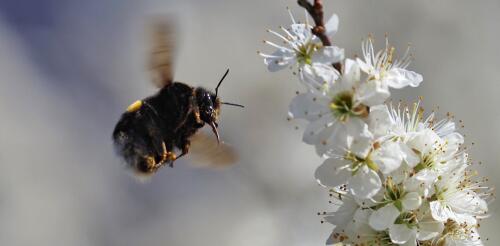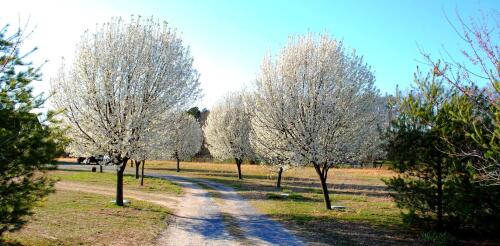Pollen
As trees and flowers blossom in spring, bees emerge from their winter nests and burrows. For many species it’s time to mate, and some will start new solitary nests or colonies. Bees and other pollinators are essential to human society. They provide about one-third of the food we eat, a service with a global value estimated at up to $US577 billion annually. But bees are interesting in many other ways that are less widely known. In my new book, “What a Bee Knows: Exploring the Thoughts, Memories, and Personalities of Bees,” I draw on my experience studying bees for almost 50 years to explore how these creatures perceive the world and their amazing abilities to navigate, learn, communicate and remember. Here’s some of what I’ve learned. It’s not all about hives and honey Because people are widely familiar with honeybees, many assume that all bees are social and live in hives or colonies with a queen. In fact, only about 10% of bees are social,...
If you’re feeling the misery of allergy season in your sinuses and throat, you’re probably wondering what nature has in store for you this time – and in the future. Pollen allergies affect over 30% of the global population, making them a significant public health and economic issue as people feel ill and miss work. Our research shows that, as greenhouse gases warm the planet, their effects are driving longer and more intense pollen seasons. To help allergy sufferers manage their symptoms in our changing climate, we’re building better pollen forecasts for the future. As atmospheric scientists, we study how the atmosphere and climate affect trees and plants. In a 2022 study, we found that the U.S. will face up to a 200% increase in total pollen this century if the world continues producing carbon dioxide emissions at a high rate. Pollen season in general will start up to 40 days earlier in the spring and last up to 19 days longer than today under that scen...
When people think of spring, they often picture flowers and trees blooming. And if you live in the U.S. Northeast, Midwest or South, you have probably seen a medium-sized tree with long branches, covered with small white blooms – the Callery pear (Pyrus calleryana). For decades, Callery pear – which comes in many varieties, including “Bradford” pear, “Aristocrat” and “Cleveland Select” – was among the most popular trees in the U.S. for ornamental plantings. Today, however, it’s widely recognized as an invasive species. Land managers and plant ecologists like me are working to eradicate it to preserve biodiversity in natural habitats. As of 2023, it is illegal to sell, plant or grow Callery pear in Ohio and Pennsylvania, and will become illegal in South Carolina on October 1, 2024. North Carolina and Missouri will give residents free native trees if they cut down Callery pear trees on their property. How did this tre...


